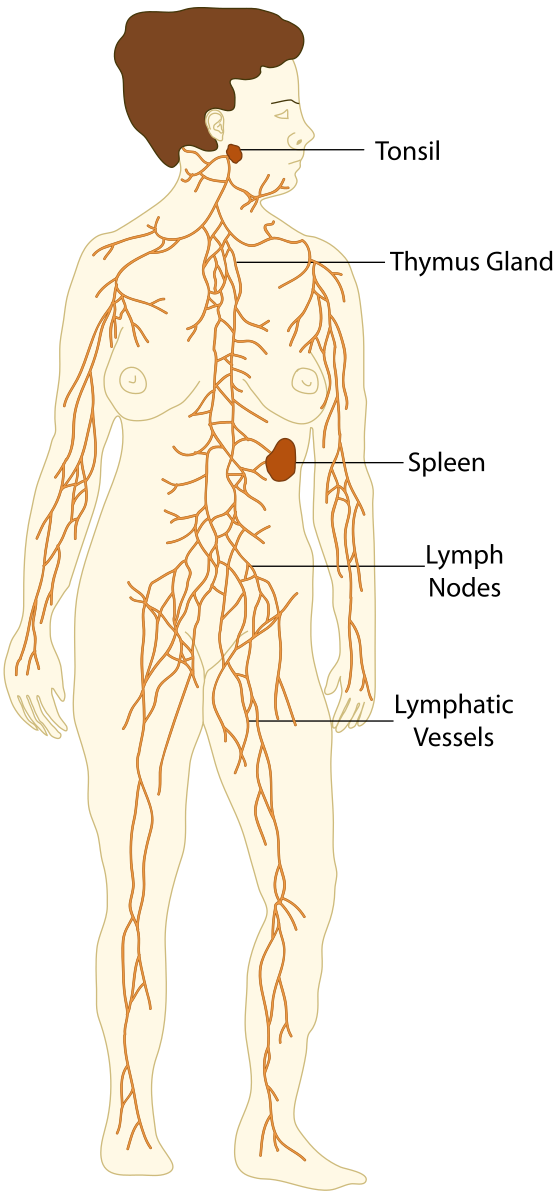immunology wars
may your immune system defend you
Lymph Nodes

The lymph system and the lymph nodes provide an additional network through which cells of the immune system can circulate and provides an optimal environment for communication between these cells. This network is fundamental for the activation of B- and T-lymphocytes and therefore the adaptive immune response.
Lymph nodes are positioned at anatomical locations that allow the maximum number of immune signals to come into contact with each other. An example of this are the tonsils, found at the back of the throat. The cells within the lymph nodes are highly organised allowing optimal opportunities for circulating dendritic cells, T- and B-lymphocytes to interact with one other.

Source: Wikipedia - The Emirr (CC)
Lymph nodes are fundamental for the adaptive immune response to threats especially those that have not previously been encountered. Dendritic cells that present fragments of the new threat on their surface via Major Histocompatibility Complex Class II (MHC CLass II), move through the lymph nodes presenting the fragments to T-lymphocytes. When a T-lymphocyte recognises the fragment it becomes activated, rapidly dividing, activating B-lymphocytes and co-ordinating an immune response against the specific threat being encountered.
Cells
- Basophils
- Eosinophils
- Mast Cells
- Neutrophils
- Monocytes / Macrophages
- Natural Killer Cells
- Dendritic Cells
- B-Lymphocytes
- T-Lymphocytes
- CD4+ T-Lymphocytes
- CD8+ T-Lymphocytes
- Regulatory T-lymphocytes
- Th17 Lymphocytes
